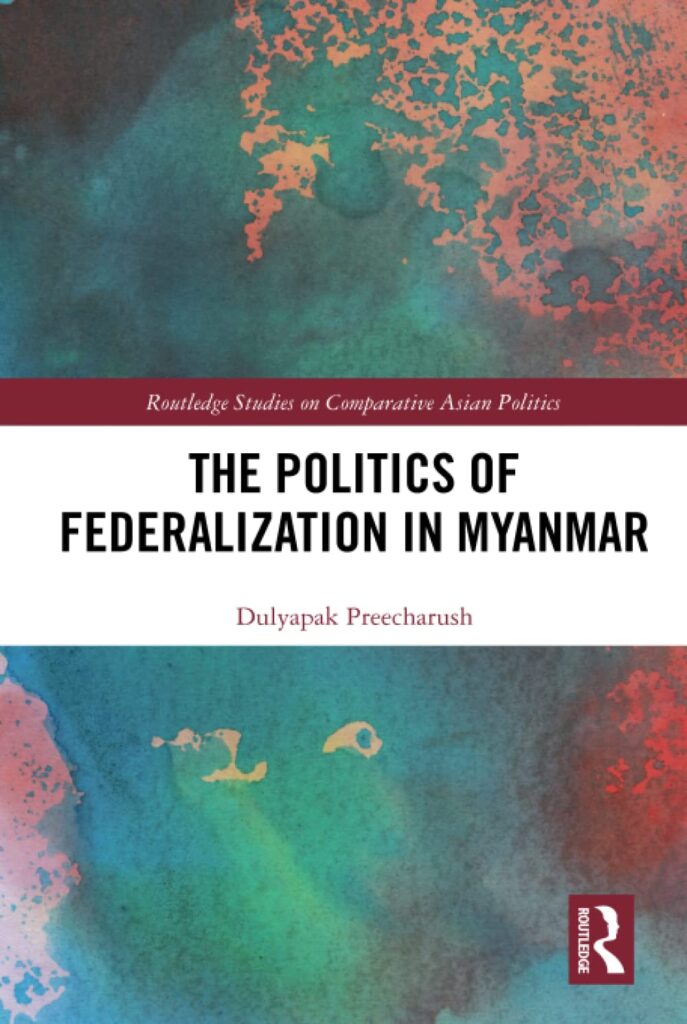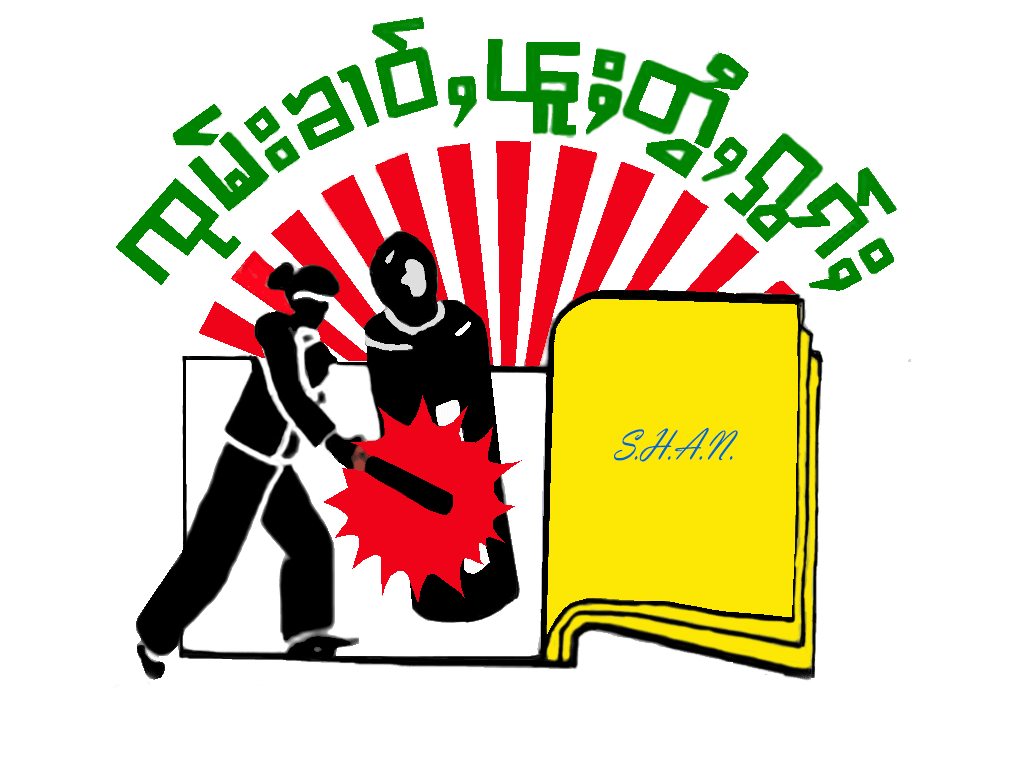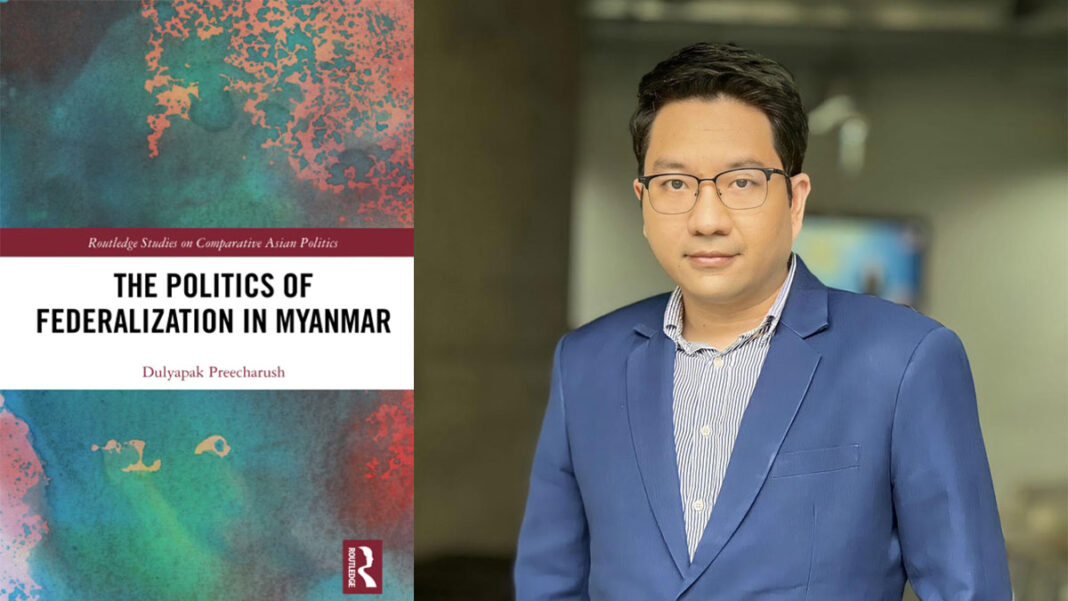Dr. Dulyapak Preecharush is an Associate Professor of Asian Studies at the Faculty of Liberal Arts and the Deputy Director of the Institute of East Asian Studies, Thammasat University, Thailand. He completed his doctorate in Comparative Politics at the University of Hong Kong, with a visiting research fellowship at Cornell University’s Southeast Asia Program.
.
He is the author of The Politics of Federalization in Myanmar which is recently published in February 2023 at Routledge Studies on Comparative Asian Politics.
Q: What inspired you to write this book about Myanmar federalization?
Ans: According to my observation, federalization became a persistent feature of Myanmar’s modern politics during the period of independent state formation from 1947 to 1948. However, when the military coup occurred in 1962, the country experienced forced top-down centralization. The new ruling military elite conflated federalism with secessionism and feared that according federalist governance powers to several constituent units largely dominated by ethnic armed groups might lead to dissolution of the state. As such, Myanmar, a multi-ethnic state, remained under an authoritarian regime with a centralized unitary state structure for nearly half a century.

Nevertheless, since the political transition in 2011, federalization has reemerged, playing a vital role in Myanmar’s state-building project. I think this phenomenon is inherently useful for analyzing Myanmar’s contemporary politics. This book addresses the following questions: What factors drive federalization in transitional Myanmar? By which attitudes, strategies, and bargaining games may political leaders move Myanmar in the direction of federalism? And when and how, or in what specific context, did Myanmar’s federalization advance and stall? This book proposes a new examination of Myanmar’s federal politics by evaluating causal variables behind federalization; attitudes of different political actors toward, and negotiation strategies for, designing federalism; and the trajectory of federalization in Myanmar’s political development.
Q: Can you kindly explain about the book?
Ans: This book argues that three process factors (constitutionalization, conflict management, and democratization) drive federalization in Myanmar. These forces developed incrementally under a former military regime (SPDC). The confluence of these forces arrived at a critical juncture in 2011, leading to significant changes in Myanmar’s federating process. Since the Nationwide Ceasefire Agreement in 2015 and Union Peace Conferences in 2016, the country’s federal trajectory has been shaped by a mediating variable negotiation mechanism, especially federal negotiations between the Myanmar government and ethnic armed groups. Nevertheless, while both sides began to employ a negotiation strategy of compromise through an institutionalized peace process, they also conducted diverse political games and battlefield escalation, intending to protect the status quo and increase bargaining power. In addition, to analyze changes and continuities in federalism-building, the book charts the dynamic pathway toward Myanmar’s current federalization (2011– 2021), analyzing how periods of progress and stagnation reflected varying world views and strategies of prominent political actors over time as well as relative strengths of each causal variable.
The book has seven chapters. It mainly focuses on Myanmar’s new federalization process, starting from 2011, which is the year of new political transition, to 2021(the coup by Min Aung Hlaing). Chapter 1 offers an introduction and views Myanmar as a specific case in federalism studies – a federalizing state in political transition and in deeply divided society. Chapter 2 deals with theoretical concepts of federalism and federalization. Chapter 3 provides a brief historical background concerning with the rise and fall of federalism by dividing the timeframe into four critical junctures: 1947,1962,1988, and 2011. Chapter 4 presents a causal analysis between the three independent variables (constitutionalization, conflict management, and democratization) and dependent variable of federalization. Chapter 5 examines components and operation of federal negotiation mechanism in the national peace process. Chapter 6 examines political development of Myanmar federating process since 2011.This chapter aims to add empirical evidence and clarify the interactive picture between independent-dependent variables and political stakeholder federalizing strategies as presented in Chapters 4 and 5 as seen through dynamic political development. The final chapter offers further comparative analysis. The highlight of this chapter is a systematic comparison between Myanmar’s federalism-building experience and other country cases as well as recommends a new typology that might help predict possible outcomes of Myanmar’s federal system and potential scenarios for the country’s federalism development in future.

Q: From your argument, there are three factors drive federalization in Myanmar, will Myanmar achieve federal democracy? If yes, how long Myanmar will be in vicious circle of the rise and fall of federalism as you mentioned with four critical junctures: 1947, 1962, 1988, and 2011?
Ans: I think the combination of three main forces (constitutionalization, conflict management, and democratization) is necessary for Myanmar’s federal development. The positive progress of these three forces can offer a sufficient strength for a full-fledged federalization. Since 1947, constitutionalization and democratization were strong but conflict management was very weak, due to the widespread of civil war. Since 1962, all these three factors were weak. Thought there was a constitutional development, it didn’t help creating a federal constitution. In 1988, democratization showed a significant strength but since 1988, its strength decreased while constitutionalization and conflict management were weak. However, in the late SPDC administration, the power of these three forces gained momentum. The confluence of these forces emerged and developed clearly in 2011. As a result, federalization has reemerged and played a crucial role in Myanmar’s state-building project. If Myanmar wants to achieve federal democracy, I think, at least, all important political stakeholders need to think about how to develop the quality of constitutional reform, conflict management, and democracy.
Q: Many people claim that Myanmar is shrink into a failed state, Is Myanmar still in federalization process? Are the conflict-actors in manageable of the conflicts?
Ans: I think Myanmar is still in the federalization process. Before the coup in 2021, constitutional reform, conflict management, and democratization supported and sustained Myanmar’s federalization while the core of national peace process was the establishment of a democratic federation. Since the coup, the political legacy of federalism-building efforts in transitional period has remained and the hope of federal democracy sustains resistance to centralized military dictatorship. Any political solution for the country’s protracted conflicts still depends on the Myanmar peoples’ realization or their consciousness toward federalism. Although Myanmar conservative military elites have sticked on maintaining a centralized unitary state model, their incremental negotiations for designing federalism with other political stakeholders can emerge and develop. Yes, according to Myanmar’s post-coup politics, it is too early to predict which government type and political structure will be firmly established in Myanmar. Myanmar may become a more democratic federalism, remain in a gray zone of hybridity, return to a full unitarian state, or move into a fragile state. However, the pathway for Myanmar’s state-building still depends on federalism. Nevertheless, due to the serious conflicts and confrontations among adversaries since the coup, the progress of conflict management, settlement, and resolution is very important for the progress of federalization.
Q: How 2021 coup different from previous coups? Are the military leaders (junta) sincere and embrace federal democracy in Myanmar?
Ans: The 1962 coup occurred when the federalization process reached its zenith, especially the federal negotiations between U Nu’s government and ethnic political leaders while the 1988 coup aimed to destroy democratic uprising and it occurred when the democratization process gained momentum. The result from the 1962 and 1988 coups is the dark age of Myanmar’s federalization and democratization. The 2021 coup aimed to freeze the fast democratization process and destroy Aung San Sui Kyi’s power base. Nevertheless, its result is not the long dark age of democratization and federalization. Rather, it is the nationwide federal-democratic revolution, aiming to uproot a highly centralized military authoritarian regime.
Due to the country’s protracted conflicts as well as the Tatmadaw’s political ideology, focusing on national unification and military authoritarianism in the state of emergency, it is too difficult to confirm that the current military junta sincere and embrace federal democracy. But in order to make peace before moving to the political transition process, the junta’s engagement with the peace process, concerning with some elements of democracy and federalism, is still required.
Q: From your insight and perspective, after 2021 coup, what Myanmar will look like in future?
Ans: I think the interesting issue after 2021 coup is Myanmar’s state-building pattern which depends on the dynamic power competition between the military junta, the opposition groups, and the ethnic armies. A military government seeks to control the state and maintain its praetorian power in politics while the opposition groups aim to uproot a centralized military dictatorship and establish a democratic federation. Ethnic armies have different stances – ranging from negotiating with the junta, fighting against the Myanmar military, and having no clear decisions to side with the junta or opposition groups. Hence, the pathways for Myanmar’s state-building will depend on these political stakeholders’ state imaginaries as well as the mode of fighting and negotiation inside this tri-power structure. The SAC may want to govern Myanmar through a centralized unitary state with military dictatorship or perhaps through a hybrid state with hybrid regime (combination between federalism/democracy and unitarianism/authoritarianism) while NUG, PDF, and other political coalitions want to have a decentralized democratic federal state. For diverse ethnic armies, some want to see a decentralized federal democracy while some might have different specific models, including a confederal state and decentralized autonomous governing units under a larger unitary state structure.
Q: Is there anything you would like to add or convey your message to our audiences?
Ans: Federal blueprint was formed in Myanmar since the Second Panglong Agreement and the 1947 drafted constitution but the coup by Ne Win in 1962 frozen the federating process. Since then, Myanmar was in the dark age of federalization. However, in 2011, federalization reappeared. Why? This book aims to answer this question as well as analyze other significant political issues in Myanmar’s contemporary politics. Apart from federalism, the book offers several interesting insights about Myanmar modern history, democracy, ethnic politics, and peace process. Moreover, the book suggests a systematic conceptual framework and compare Myanmar with other countries such as Nigeria, Pakistan, Ethiopia, South Sudan, Canada, Switzerland, Russia, and USA. My exclusive interviews with Myanmar elites, encompassing Myanmar government and ethnic armies (RCSS, KNU, KNPP, KIA, etc.) also appear inside the book. Hence, I do hope that The Politics of Federalization in Myanmar is a good gift for readers who are interested in Myanmar and comparative politics.




